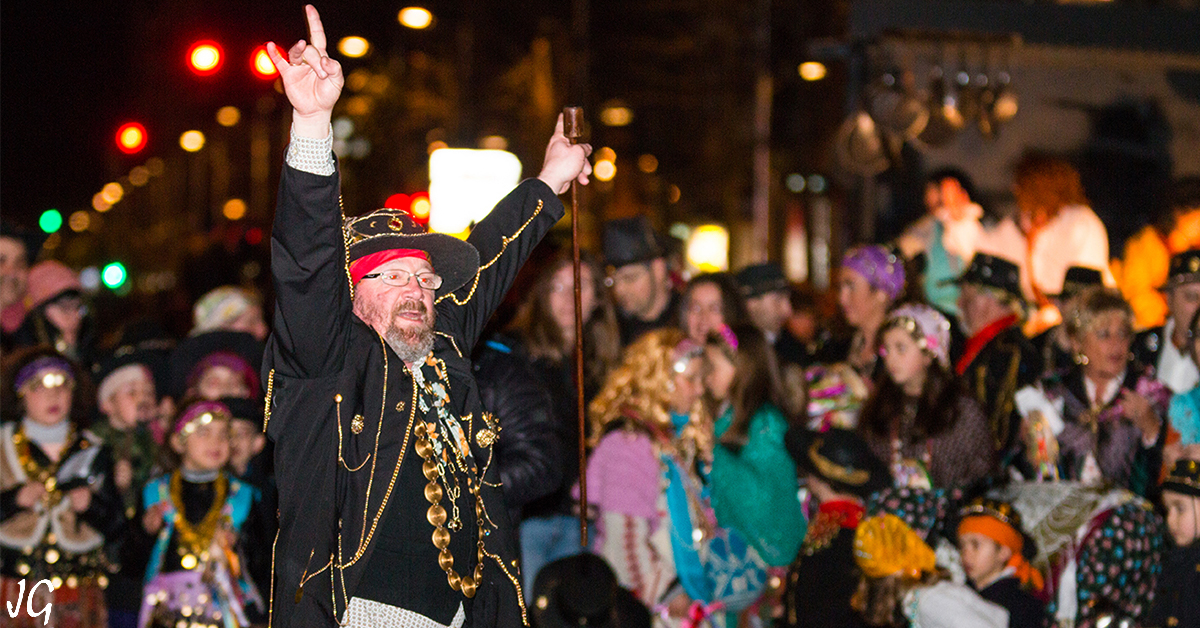Basque ethnography at a glance
Troupes of Caldereros, or Tinkers, are an important element of today’s carnival in Gipuzkoa, well-established as they are in twelve municipalities: Andoain, Astigarraga, Azpeitia, Donostia, Eibar, Errenteria, Hernani, Irun, Oiartzun, Ordizia, Pasaia and Tolosa. In most cases, they parade a week before carnival officially begins, thus announcing the imminent arrival of the annual festival.
Similar characteristics are found in all the places where troupes of Caldereros take to the streets. Participation is generally open to anybody. Participants are responsible for completing their own costumes, but there are many similarities in terms of clothing. Men wear dark waistcoats, jackets, and hats, often with a coloured scarf and golden ornaments hanging down. Some even blacken their faces. Women, for their part, don colourful skirts and shirts, woollen scarves or shawls, golden ornaments and sometimes a headscarf. Many females put on bright make-up. Most troupe members carry old frying pans in their hands and beat them with sticks or other implements, to make noise. There are also elements and characters that might vary from location to location: donkey- or horse-drawn carts, the queen of caldereros, the Bear and the Caretaker, dancers, musicians… And men and women tinkers parade through villages and neighbourhoods banging pots and pans.
The troupe of Tinkers first appeared in 1884 in Donostia, as any other carnival troupe[1]. Parodies of everyday life were commonplace during carnival, artisans who made a living by travelling from village to village repairing pots and other metal utensils being imitated by troupers, in this case. Troupes would usually be arranged each year, and new costumes and music were created for the occasion. However, as a result of their successes, and after several ups and downs, the popular caldereros from the capital of Gipuzkoa have performed every year without fail since 1972. Although their presence used to be limited to the Old Part, boilermakers of today can also be seen in other neighbourhoods of Donostia. The tradition of tinker troupes progressively spread throughout Gipuzkoa, and the influence of carnival elements and customs which originated in Donostia might indeed be appreciated at provincial level.
The Inude eta Artzainak ‘Maids and Shepherds’, Oilarrak ‘Roosters’, Lanpernak ‘Barnacles’, and Jardinzayak ‘Gardeners’ troupes, along with the well-known Tamborrada ‘Drum Festival’, underwent a comparable evolution. Originally planned for no more than a couple of feast days, these are events which nowadays feature prominently during the carnival, having even developed its own dynamics above and beyond this festive period, in the case of the Tamborrada.
[1] Sada Anguera, Javier María. Carnavales donostiarras: de los orígenes a nuestros días [The Donostia Carnival: from its origins to the present day]. Donostia-San Sebastián: Txertoa Publishers, 1991.
Maddi Dorronsoro – Anthropologist




